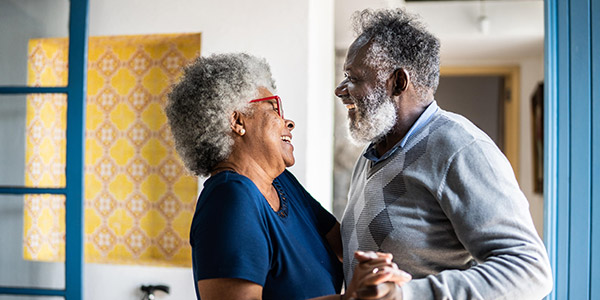Homeowners
How a Reverse Mortgage Works
December 20, 2018
A Guide to Reverse Mortgages
If you're one of the millions of older Americans whose home is paid for or only a small mortgage remains on it, you may be able to increase your security and stability in retirement by learning how reverse mortgages work.
Taking the time to obtain accurate information about a reverse mortgage could well be worth your while because, according to the National Reverse Mortgage Lenders Association, housing wealth for those 62 and older, grew to $6.6 trillion in the fourth quarter of 2017 -- and some of that equity might be yours.
The official name for a reverse mortgage insured by the Federal Housing Administration (FHA) is a Home Equity Conversion Mortgage or HECM. The name describes what takes place. You convert some of your home equity into cash with a new reverse mortgage.
Unlike a traditional mortgage that you may have used to purchase your home, a reverse mortgage doesn't have to be repaid for as long as you live in your home. You get the money, and you get to continue living in your home without the burden of monthly mortgage payments, eliminating the need to sell, downsize, or move to a less costly region. However, you must pay all property taxes, insurance, HOA, and other applicable fees and show a willingness and capacity to maintain the home's expenses.
The money you get is also tax-free (because it's technically a loan) and it will not affect your social security, Medicare, or pension. It may, however, impact Medicaid or SSI recipients, so always speak with your financial advisor or tax consultant before moving ahead with a reverse mortgage.
Show me the money!
Before touching on some reverse mortgage rules and requirements, and, more importantly, whether a reverse mortgage is an appropriate product for you, consider how you might use the cash to live more comfortably and confidently.
With the equity from your reverse mortgage, you could pay off or pay down bills, improve your home, keep from raiding your investment portfolio during market dips, ease money concerns in the event of long-term illness, or simply lift the burden of living month to month just to meet your expenses. Again, the cash is yours to use however you like and see fit.
The amount of cash you receive is based on a combination of factors: your age – one borrower must be at least 62 years of age or older – the prevailing interest rate, and the value of your home.
The FHA bases your home equity on a maximum claim amount (MCA) of $679,650. Your home may be worth more than $679,650, but this additional amount is not factored into the FHA's calculation.
In January 2018, the average amount (initial principal limit) a reverse borrower received after their loan closed was $211,468 and the average price of the home used for the loan was $412,038.*
Select your ideal payment option
You can receive your money in a lump sum, over years (term), monthly installments for life (tenure), or as a line of credit (LOC) for which you're charged interest on only the portion of the line you use. You can also mix your options, say, receive a mini-lump sum and receive the remainder in installments. For lump sums and lines of credit, a first-year withdrawal limit of 60% may apply. This limit was implemented as a borrower protection.
Never repay more than your home is worth
A reverse mortgage, which is a loan, only has to be repaid after your death or you sell or leave the home for longer than six consecutive months. If the former, your heirs can pay off the loan from the sale of your home and keep any remaining proceeds. If the loan amount due is larger than the sale proceeds, your heirs aren't responsible for making up the difference. The FHA makes up the shortfall from the upfront insurance you paid to obtain the loan and the monthly insurance premiums paid over the life of your loan.
As for the final loan amount due, this total will be based on the interest that has compounded on your original loan balance (all origination fees and closing costs, plus the cost of mortgage insurance financed into the loan).
In a rising real estate market, this final loan balance may be partly or completely offset by your home's corresponding appreciation. If, for example, your home appreciated 3% over 20 years, your $500,000 home when you took out a reverse mortgage, would be worth $800,000 at the time of sale, giving you or your heirs more equity with which to pay off the loan.
Uphold your part of the agreement
For married couples whose names are both on the mortgage (say, you're 65 and your spouse is 62), the loan amount will be based on the age of the youngest applicant. This results in a smaller payout because the surviving spouse can stay in the home for life.
A spouse younger than 62 will not qualify as a borrower, but may still be included on the loan as a non-borrowing spouse. Again, the loan amount will be based on the lower age of the spouses.
Although with a reverse mortgage, you'll never have to make another mortgage or interest payment for as long as you or your spouse live in your home, you must maintain the property and pay all property taxes, homeowner's insurance, HOA dues, and other relevant fees, if applicable. If you don't uphold these conditions, you would have violated the agreement, and your loan could come due.
To determine your capacity to meet these reverse mortgage requirements, the lender does a financial assessment at the time of application. If you do not have enough resources, the lender may set aside some of the reverse mortgage proceeds to pay these expenses in the future. This vehicle is a LESA or Life Expectancy Set Aside, which is like an impound or escrow account maintained by the mortgage company to collect insurance and tax payments necessary for you to keep your home. This set-aside will reduce your reverse mortgage payout, but will further protect you from losing your home because of nonpayment.
To ensure you understand all your responsibilities with a reverse mortgage, all borrowers and non-borrowing spouses also must receive independent counseling about this loan.
Deepen your reverse mortgage knowledge
Although a reverse mortgage is based on a simple concept – the lender pays you versus your paying them as with a traditional (or forward) mortgage – a reverse is nonetheless filled with many subtleties and nuances.
If you're not planning to stay in your home for a substantial period, a reverse mortgage may prove a more expensive option than other financing alternatives like a traditional home equity loan.
Besides speaking with your lender and an FHA-approved reverse mortgage counselor about whether a reverse mortgage is right for you, consider consulting a fee-only financial planner about how you might be able to use a reverse mortgage as part of an overall retirement planning strategy.
Ask yourself what you want a reverse mortgage to help you accomplish. If you want to stay in your home, never make another mortgage payment, and pull out some of the home equity that has built up over the years, then a reverse mortgage might give you that financial freedom.
(Look to this blog in the future for how you can also use a reverse mortgage to purchase a new home.)
* ReverseMortgageDaily





 Smart Moves Start Here.
Smart Moves Start Here.